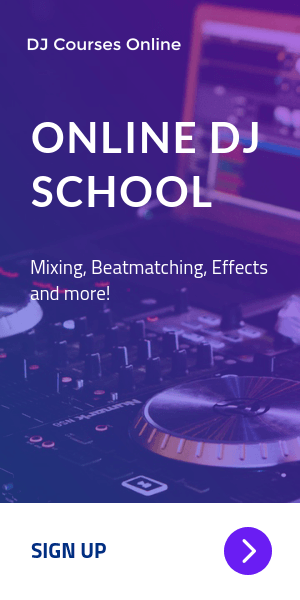 If you’re reading this, it means you decided to be a DJ as a hobby or profession, got your gear, set it up and started learning it. Maybe you’re one step ahead and already took classes or online courses.
If you’re reading this, it means you decided to be a DJ as a hobby or profession, got your gear, set it up and started learning it. Maybe you’re one step ahead and already took classes or online courses.
Now, you’re at such a point that makes you wonder what would be your priorities in advancing as a DJ.
Good question. We both know there’s a lot to learn, but there needs to be a top list of practices in the early stages of your journey in the world of DJ’ing.
Keep in mind, I’m only talking about beginner DJs. Once you have enough experience, do things just the way you want. Still, most of what I’ll tell you here may be on that list later on.
Let me break down that list for you one by one below. There is of course more to it, I’ll tell you the major ones which you really need to focus on.
Get To Know Your Music
Although music is structured in a certain format, every song is different from each other in terms of intros, drop points and outros, especially remixes.
You definitely need to know when to make the transition. If you clash vocals, that mix becomes garbage.
In an earlier post, I explained about counting beats and bars telling why it is important for a DJ. You need to cue your track on the first major beat and start mixing at the right time. Otherwise, elements in both songs start clashing.
So, to be able to make professional transitions, you have to know where it really begins, where it drops and when the beat ends in a song.
Before mixing any song or remix, do yourself a favor and listen to the entire track. Get familiar with it.
Just an example: You may play a remix and mix into the next one at 3:00 where the vocals end, because it sounds right to you, on the other hand, you do it at 4:00 where there are only beats with a different track just because it sounds better for that mix.
You can only do this if you know how that song flows.
I made terrible mixes and transitions in the past, just by not knowing what I played. But I learned my lesson.
Beatmatching
Digital gear is so genius for music that it can almost DJ itself.
Beatmatching is one of the flagship features on a DJ software giving you the ability to mix two songs without even listening to the beat.
Well, there is a flip side to that coin. If you’re a real DJ, you should be able to perform regardless of equipment you play on. There may not always be a laptop and controller in front of you.
Syncing two tracks with a single button is convenient, I understand, but it really takes the most valuable skill of being a DJ away from you.
Your ear should decide if beats match, before anything. Trust me, software may sometimes fool you and cause bad sounding mixes.
Please try to practice beatmatching by your ear as much as you can. There will always be the sync button there, once you learn it the manual way, use that button anytime you want.
Don’t forget, being able to sync the beats is the basic of DJ’ing.
Transitions
Best mixes happen with right timing. Cueing the track correctly is the first step, dropping it into transition is the second.
I told you before, if vocals or major elements in two songs clash, throw it in the trash can. It’d sound awful.
In the learning phase, you should play mix sets and record them so that you can self criticize later. Never be afraid of making mistakes.
Load two songs and mix several times at different points. You’ll realize that each one will sound different, maybe better than the one before.
More mixes and transitions you practice, quicker you get to the pro level.
I will go back to the first title, knowing your music. You can be best at mixing music only if you really know what you play.
Key Mixing
What is the purpose of a DJ at a party? Playing popular and danceable music without breaking the harmony of human ear, mind and body.
You can achieve this with good transitions, best music selections and mixing harmonically which means playing tracks in the same key or tone and follow certain rules to do it.
Most of the latest DJ software programs are capable of analyzing tracks and detect their keys. There are also programs like Mixed In Key that you can use separately.
Harmonic mixing is about playing songs in the same or most compatible key. You can use the Camelot Wheel to find out which tracks match the current playing one (more information is here).
Best DJs around the world all use this technique to perform on stage. So, it should be on your list of practice too.
I’m not telling you to mix with keys all the time, but when you do, be sure that it’ll sound much better.
As a final note, I advise all beginner DJs to play and record mix sets as much as they can, by making the above titles “high priority”.


